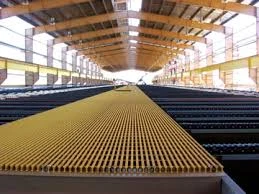
-
 Afrikaans
Afrikaans -
 Albanian
Albanian -
 Amharic
Amharic -
 Arabic
Arabic -
 Armenian
Armenian -
 Azerbaijani
Azerbaijani -
 Basque
Basque -
 Belarusian
Belarusian -
 Bengali
Bengali -
 Bosnian
Bosnian -
 Bulgarian
Bulgarian -
 Catalan
Catalan -
 Cebuano
Cebuano -
 China
China -
 China (Taiwan)
China (Taiwan) -
 Corsican
Corsican -
 Croatian
Croatian -
 Czech
Czech -
 Danish
Danish -
 Dutch
Dutch -
 English
English -
 Esperanto
Esperanto -
 Estonian
Estonian -
 Finnish
Finnish -
 French
French -
 Frisian
Frisian -
 Galician
Galician -
 Georgian
Georgian -
 German
German -
 Greek
Greek -
 Gujarati
Gujarati -
 Haitian Creole
Haitian Creole -
 hausa
hausa -
 hawaiian
hawaiian -
 Hebrew
Hebrew -
 Hindi
Hindi -
 Miao
Miao -
 Hungarian
Hungarian -
 Icelandic
Icelandic -
 igbo
igbo -
 Indonesian
Indonesian -
 irish
irish -
 Italian
Italian -
 Japanese
Japanese -
 Javanese
Javanese -
 Kannada
Kannada -
 kazakh
kazakh -
 Khmer
Khmer -
 Rwandese
Rwandese -
 Korean
Korean -
 Kurdish
Kurdish -
 Kyrgyz
Kyrgyz -
 Lao
Lao -
 Latin
Latin -
 Latvian
Latvian -
 Lithuanian
Lithuanian -
 Luxembourgish
Luxembourgish -
 Macedonian
Macedonian -
 Malgashi
Malgashi -
 Malay
Malay -
 Malayalam
Malayalam -
 Maltese
Maltese -
 Maori
Maori -
 Marathi
Marathi -
 Mongolian
Mongolian -
 Myanmar
Myanmar -
 Nepali
Nepali -
 Norwegian
Norwegian -
 Norwegian
Norwegian -
 Occitan
Occitan -
 Pashto
Pashto -
 Persian
Persian -
 Polish
Polish -
 Portuguese
Portuguese -
 Punjabi
Punjabi -
 Romanian
Romanian -
 Russian
Russian -
 Samoan
Samoan -
 Scottish Gaelic
Scottish Gaelic -
 Serbian
Serbian -
 Sesotho
Sesotho -
 Shona
Shona -
 Sindhi
Sindhi -
 Sinhala
Sinhala -
 Slovak
Slovak -
 Slovenian
Slovenian -
 Somali
Somali -
 Spanish
Spanish -
 Sundanese
Sundanese -
 Swahili
Swahili -
 Swedish
Swedish -
 Tagalog
Tagalog -
 Tajik
Tajik -
 Tamil
Tamil -
 Tatar
Tatar -
 Telugu
Telugu -
 Thai
Thai -
 Turkish
Turkish -
 Turkmen
Turkmen -
 Ukrainian
Ukrainian -
 Urdu
Urdu -
 Uighur
Uighur -
 Uzbek
Uzbek -
 Vietnamese
Vietnamese -
 Welsh
Welsh -
 Bantu
Bantu -
 Yiddish
Yiddish -
 Yoruba
Yoruba -
 Zulu
Zulu
Advanced Fiberglass Clarifier System for Effective Water Treatment and Solid Removal
Fiberglass Clarifier System for Efficient Water Treatment and Solids Management
In the quest for sustainable water management and effective solid waste treatment, the fiberglass clarifier system emerges as a robust solution, combining efficiency and durability with environmental considerations. This innovative technology plays a crucial role in various industries, including municipal wastewater treatment, industrial processes, and even agricultural applications. Understanding its operation, benefits, and broader implications is key to appreciating its role in modern water treatment systems.
Understanding the Fiberglass Clarifier System
A fiberglass clarifier system is engineered to facilitate the separation of suspended solids from water. Its design typically features a large basin where water is subjected to gravitational forces, enabling sedimentation to occur. As water enters the clarifier, its velocity decreases, allowing heavier particles to settle at the bottom while clearer water flows out of the top. The clarifier is often constructed of fiberglass-reinforced plastic, which offers significant advantages over traditional materials.
Fiberglass is lightweight, corrosion-resistant, and highly durable, making it an ideal choice for water treatment applications. Unlike metallic systems, fiberglass components are not susceptible to rusting or degradation from various chemicals commonly found in wastewater. This longevity reduces maintenance costs and extends the life of the clarifier system, providing a more reliable solution for operators.
Efficiency in Water Treatment
One of the primary benefits of the fiberglass clarifier system is its efficiency in treating water. The design allows for a high rate of water flow, which is essential in settings where large volumes of water need to be processed. The sedimentation process within the clarifier ensures that solids are effectively removed from the water column, leading to cleaner effluent. Additionally, the fiberglass material enhances the system’s thermal insulation properties, which is beneficial in maintaining optimal operational temperatures, thereby improving overall treatment efficacy.
fiberglass clarifier system for efficient water treatment and solid

Efficiency is not just about operational speed; it also encompasses the system’s ability to recover valuable resources. For instance, in industrial applications, settled solids can often be composted or repurposed, minimizing waste and promoting a circular economy.
Environmental Benefits
The use of fiberglass clarifier systems contributes positively to environmental conservation efforts. By effectively treating wastewater, these systems reduce the discharge of harmful pollutants into natural water bodies, helping to maintain aquatic ecosystems' health. Furthermore, the efficient removal of solids minimizes the likelihood of clogging and other issues downstream, ensuring smoother operation across the entire water treatment process.
Moreover, reducing the environmental footprint is integral to modern water management strategies. The durability and reduced maintenance needs of fiberglass systems translate into lower energy consumption and fewer resources used for repairs or replacements. This sustainable approach aligns with global efforts to address water scarcity and water quality challenges.
Conclusion
The fiberglass clarifier system represents a significant advancement in water treatment technology, delivering efficient performance in solid management and water purification. Its advantages—ranging from durability and efficiency in operational capacity to substantial environmental benefits—position it as an essential component of contemporary wastewater treatment facilities.
As industries and municipalities increasingly prioritize sustainability, the adoption of fiberglass clarifier systems is likely to rise. By investing in such technologies, stakeholders not only ensure compliance with environmental regulations but also contribute to the responsible stewardship of water resources for future generations. This becomes particularly critical as urbanization and industrial activities place ever-greater demands on our limited water supplies. The fiberglass clarifier system exemplifies innovation in action, promising a cleaner, more sustainable future for water management.
Latest news
-
Exploring the Benefits of Top Hammer Drifter Rods for Enhanced Drilling PerformanceNewsJun.10,2025
-
High-Precision Fiberglass Winding Machine for GRP/FRP Pipe Production – Reliable & Efficient SolutionsNewsJun.10,2025
-
FRP Pipes & Fittings for Shipbuilding - Corrosion-Resistant & LightweightNewsJun.09,2025
-
Premium FRP Flooring Solutions Durable & Slip-ResistantNewsJun.09,2025
-
Premium Fiberglass Rectangular Tanks Durable & Lightweight SolutionNewsJun.09,2025
-
Tapered Drill String Design Guide Durable Performance & UsesNewsJun.09,2025









